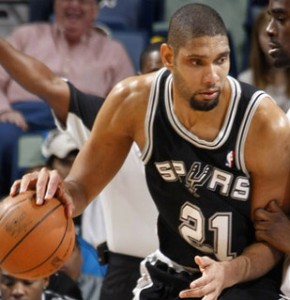 The Spurs have been marching through with Tim Duncan outplaying the bigs, and Tony Parker bobbing and weaving through defenses at will. Manu Ginobili is the unpredictable factor that unsettles any defensive scheme that the Spurs come across. Tiago Splitter bangs, with Kawhi Leonard and Danny Green doing the rest.
The Spurs have been marching through with Tim Duncan outplaying the bigs, and Tony Parker bobbing and weaving through defenses at will. Manu Ginobili is the unpredictable factor that unsettles any defensive scheme that the Spurs come across. Tiago Splitter bangs, with Kawhi Leonard and Danny Green doing the rest.
And guess what else? THEY WIN CLOSE GAMES! They opened the Warriors series with a double overtime win to take control. They won the series in 6 games making that win pivotal for momentum. When they swept the Grizzlies they won two games in overtime that could have changed the complexion of that series completely!
Playoff series are a continuing chess game of adjustments. The teams know each other so well by this time that the difference comes down to who can execute the best and make critical reads on the fly.
The critical element for the “Championship Formula” becomes the will to win and the experience to make the big play that wins the big game. All of the other elements are the price you have to pay to get to that moment when the unstoppable force meets the immovable object.
Of course a timely injury, a suspension, or foul trouble can upset the balance of any team. Indiana has exposed the Heat for being thin inside and banged up. San Antonio has age going against them. The chance of the wild card (a role player going off, ie. Udonis Haslem) changing a game is always present. That’s why they play the game!
So for now the guards rule, shooters fill spots, bigs fill roles, and the war of attrition is a thing to behold.
The experienced teams have control, and the up and comers suffer through another off-season while the executives work on getting the right pieces for the formula. Like picking stocks, it works until it doesn’t — then everyone scrambles for the new Formula.
Danny Schayes is a retired 18-year-veteran of the NBA, a professional broadcaster and aspiring author now penning NBA columns for SheridanHoops. Follow him on Twitter.
MORE FROM DANNY SCHAYES:
HOW DO HEAT COMPARE TO GREATEST TEAMS EVER?
ON NBA COACH OF THE YEAR, AND COACHES IN GENERAL
I guess this becomes more relevant with the news that Hollins is allegedly ready to leave because of his conflicts with management’s love of analytics in shaping the team, and particularly with Hollinger’s alleged interference. You have an interesting perspective in your article in that you present a “qualitative” analytic view of what a playoff-tough team requires. What, in your mind might be the main advantages and disadvantages between this and one that relies on quantitative analytics, assuming both are state of the art?
Would be interested to hear your thoughts on the Memphis Grizzlies. They did extremely well during the regular season and the first two rounds of the playoffs with only one capable isolation player (Conley) among their big three (Gasol, Randolph, and Conley) and zero lights-out three point shooters. They traded away their best isolation scorer (Gay) and let their second-best isolation scorer walk (Mayo). Adimittedly, both were not playing up to par during their last stint with the Grizzlies, and the offense actually became more efficient during the regular season after Gay left. The Gay trade was seen as a victory for quantitative analytics vs. “gut” evaluation of talent, but was that the case? Could they have done better against the Spurs with Gay and/or Mayo? Or would it have been a further hinderance to their style of offense? Thanks.